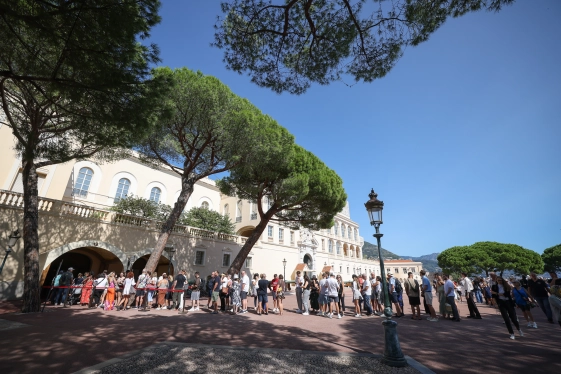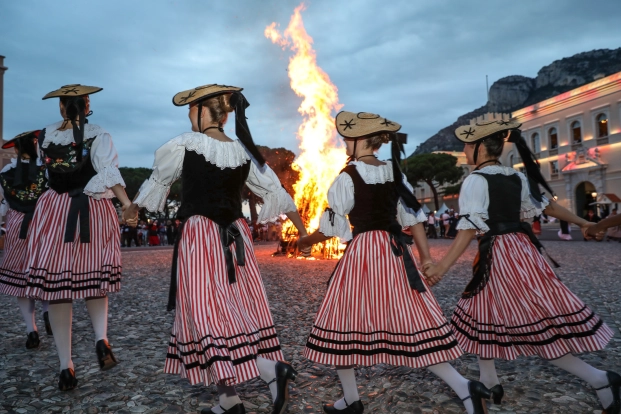

Introduction
In 2007, the Principality of Monaco joined the 2003 UNESCO Convention for the Safeguarding of the Intangible Cultural Heritage. The Heritage Institute is tasked with taking stock of the intangible cultural heritage by drafting survey forms with support from a UNESCO expert. This "living" heritage involves regular updating of inventory sheets and identifying cultural practices that meet the Convention’s criteria.
Act No. 1.446 relating to the preservation of national heritage sets out a framework for intangible cultural heritage. It includes practices, performances, oral traditions, knowledge and expertise as well as the associated instruments, objects, artefacts and cultural spaces. It can be found in a number of areas, including traditions and language, performing arts, rituals and festivities and traditional craftsmanship. Numerous religious festivals are celebrated in the Principality throughout the year, while gastronomy and music also contribute to the country’s cultural identity.
Religious Festivals and traditions
Saint Devota Day
Every year, on 26 and 27 January, Saint Devota is celebrated in the Principality. The young saint is said to have been martyred by the Roman Consul Barbarus somewhere around the year 304 in Corsica. Her body was then said to have been placed in a small boat, which ran ashore in Monaco on 27 January. Ever since, she has been celebrated by Monegasques and is considered to be the patron saint of the country.
The festivities begin on the morning of the 26th with a mass in the Monegasque language, followed during the early evening with a procession at the port. The relics of the Saint are brought in by sea and handed to a member of the clergy. This is followed by the Benediction of the Blessed Sacrament at the Church of Saint Devota then the burning of a symbolic boat by the Sovereign Prince on the square in front of the church. On the morning of 27 January, a mass is celebrated by the Archbishop of Monaco, in the presence of the Sovereign, and there is then a procession on the Rocher with a blessing of the sea and the city.
Good Friday Procession
The Holy Week Processions begin on Holy Thursday with the Procession of the Sorrowful Virgin. A gilded wood statue of the Virgin Mary, which is usually on display in the Chapel of Mercy, is carried in a procession by the Brothers and Sisters of the Brotherhood. The procession passes along the narrow lanes of the Rocher to reach the Cathedral for the Service of the Last Supper during which, according to biblical tradition, the Archbishop washes the feet of the apostles.
Every Good Friday sees the Procession of the Dead Christ through the narrow lanes of the Rocher.
As night falls, the lights of the Rocher are dimmed and as the crowd remains in contemplation, the Procession of the Dead Christ moves off to the sound of funeral music played by the Municipal Band.
The procession is held according to a precise order representing the different Stations of the Cross.
The Brothers wear white vestments, black hooded capes with ornamental braiding and red buttons, and a black cord belt.The Sisters wear white vestments, white hooded capes with ornamental braiding and black buttons, veils and black belts.
The other participants wear outfits that are reminiscent of biblical dress. They represent, in a strictly defined order, the Virgin and the Three Marys, the twelve apostles and the Roman soldiers, framing the altar of repose of the Dead Christ borne by the Penitents.
The Diocesan pilgrimage to the Sanctuary of Our Lady of Laghet
The national pilgrimages bear witness to the link between the Monegasque faithful and the Royal Family. In 1876, following an improvement in Prince Charles III’s health, the Monegasque faithful travelled as a group to the Sanctuary of Our Lady of Laghet. It is a tradition that is kept to this day. Every year on 1 May, the faithful are invited to come, one and all, to join the Archbishop of Monaco and the Monegasque clergy in a pilgrimage on foot departing from Monaco.
St. John’s Day
Originally a pagan festival, St. John’s Day marks the arrival of summer, and also celebrates the birth of John the Baptist.
On 23 June, a mass is celebrated on Place du Palais, in the Palatine Chapel which was consecrated in 1656 and dedicated to John the Baptist. At the end of the service, the Royal Family attends the lighting of the “batafœgu”, the bonfire on the Place du Palais, around which the Palladienne group performs folk dances.
On 24 June, St. John’s Day festivities continue on the Place des Moulins with a second bonfire. Tradition has it that a small boy dressed in John the Baptist’s clothes walks in procession accompanied by a lamb covered in a sheepskin, recalling the Saint in his guise as a shepherd.
The St. John Club, a traditional Monegasque organisation established in the early twentieth century, maintains the custom of burning the pyre. Since Monaco shares this tradition with other regions of the Catholic world, the St. John Club also participates in the Maintenance in Provence of the Traditions and Fires of St. John. This is why the bonfires are lit using the Canigou Flame, which has burned without being extinguished since 1963 and is carried in a lantern to Monaco.
St. Roman’s Day
St. Roman’s Day, on 9 August, is said to have been celebrated since 1543, when the relic of the Saint was sent to Monaco. Roman, a Roman soldier, was decapitated on 9 August 258, during the reign of Valerian, for having been baptised by St. Laurent. Having become a patron saint of Monaco, St. Roman is celebrated through religious and popular festivities that begin on the last Saturday in July. These festivities, which feature a blend of food, singing and dancing, take place in the St. Martin Gardens alongside masses and processions. A special mass is celebrated in front of the altar of St. Roman in the Cathedral on 9 August, and is attended by the Royal Family.
Prince's Day
Prince’s Day is considered to be the Principality’s national holiday. It was introduced by Prince Charles III in 1857, when it was celebrated on his patron saint’s day, 4 November. Following his death, when Prince Albert I acceded to the throne, Prince’s Day was celebrated on 15 November, the day on which St. Albert is honoured.
For Prince Louis II, who became the Sovereign in 1922, the day should have been celebrated on 25 August, a quiet period in the Principality. He therefore decided, by Sovereign Ordinance, that the Sovereign’s Day should be moved to 17 January, the feast day celebrating St. Antoine, the patron saint of his granddaughter Princess Antoinette. In 1923, the Journal de Monaco began describing Prince’s Day as the “National Holiday”.
During the reign of Prince Rainier III, who came to power in 1949, the National Holiday was celebrated on 19 November, St. Rainier’s Day. His son, H.S.H. Prince Albert II decided to keep the date of 19 November, rather than move it to St. Albert’s Day on 15 November, in memory of his father.
As for the arrangements, the day before the holiday, the Principality is lit up with a fireworks display, while on the day of the 19th, there is a solemn mass at the Cathedral, followed by a presentation of medals. Detachments from the Police, the Palace Guards and the Fire and Emergency Service take part in a parade and are inspected by the Sovereign Prince.
St. Cécile’s Day
St. Cécile, a Roman martyr, is celebrated on 22 November.
The popularity of St. Cécile took off and grew in Rome during the fifth century. Her name features in the prayers of the Mass. According to Don Lanciarez, Priest of Monaco in the eighth century, St. Cécile was the “Patron Saint of Musicians” in Monaco, but there is no documented proof of such a practice, or of any particular devotion surrounding the saint. The festival received a certain solemnity in Monaco when the Cathedral Choir was founded by Monseigneur Louis-Lazare Perruchot in 1930, and it remains the celebration of the patron saint of choristers and musicians in the Principality. A statuette by the artist Zagone holds court at the corner of Rue Emile de Loth and Rue de l’Eglise.
St. Cécile, the Patron Saint of Musicians, is honoured in the Principality on the Sunday following the National Holiday on 19 November. A parade is organised in the city, preceded by a mass at the Cathedral. All of the official musical ensembles in Monaco take part. After the parade, all of the musical ensembles are invited to Monaco City Hall to celebrate St. Cécile
St. Nicholas’ Day
St. Nicholas’ Day is commemorated on 6 December. Sailors traditionally sought his protection and a church on the Rocher was dedicated to the saint in the thirteenth century, on the site of the current Cathedral.
These days, it is as the protector of children that St. Nicholas continues to be venerated, directly by the National Committee for Monegasque Traditions, of which he is the Patron Saint, with the participation of all young schoolchildren in the Principality and Monaco City Hall. An altarpiece featuring St. Nicholas which once stood in the old church can now be admired in the Cathedral; the altarpiece was painted in 1500 by Louis Bréa.
The Monegasque Language
The dialectal language is considered to be a vehicle for intangible cultural heritage. Alongside the official language, Monaco has “a lenga d'i nostri avi” – or the language of our ancestors. This language has its roots in Genoese, but it has evolved over time, in the wake of the break from Genoa and the influence of neighbouring dialects. Keen to preserve their language, in 1924 several Monegasque nationals founded what would go on to become the National Committee for Monegasque Traditions, and set out to commit to paper something that had previously been a purely spoken language, lacking any formal grammar or literature. In this spirit of passing the language on, the National Committee for Monegasque Traditions organises free Monegasque language lessons for adults.
For the younger generations, it was Prince Rainier III who, in 1976, made learning the Monegasque language compulsory in state-run primary schools from CE2 (Year 4). Today, it is compulsory up to 3eme (Year 10), and is an optional subject in upper secondary schools. In May, a Monegasque language competition is held by Monaco City Hall for all school pupils from the final year of primary school to the final year of secondary school. The most deserving pupils are rewarded at a prizegiving ceremony in the courtyard at City Hall, attended by numerous dignitaries.
Food
Monegasque food, which is characteristic of the Mediterranean region, includes a number of dishes that are often prepared for religious festivals.
Stocafí or Stockfish: is a dish based on dried cod, usually prepared on Fridays, a meatless day in this Christian region, in memory of Christ’s sacrifice. While cod comes from northern seas, the dish has been adapted for Mediterranean cuisine, featuring onions, potatoes, olive oil, bay leaves and tomatoes.
Sardiná: is the Monegasque version of the dish known as “pissaladière” in Nice. Made with a dough prepared using olive oil and wheat flour, it is covered with a tomato purée, anchovy mousse, olives and garlic.
Fougasse monégasque: is traditionally served as a dessert at Christmas, with red and white aniseed, to match the colours of Monaco, and sugared almonds. The dough is made from flour, white wine, orange blossom, aniseed, olive oil, anisette and rum.
Barbajuan: is a Monegasque speciality that is traditionally prepared during Lent and bears the name of its presumed creator, Jean. It’s a kind of fried ravioli stuffed with rice, egg, olive oil, grated Parmesan and Swiss chard.
Farinà or Pannisse: is a dish made of chickpea flour and saltwater, with a little oil. The dough is then cut into strips, which are fried in boiling oil for two or three minutes. Although similar in preparation, Nice’s socca is baked in the oven.
Pan de Natale: which literally means Christmas bread, is – as its name suggests – prepared to celebrate the birth of Christ. Circular in shape, the bread is decorated with four nuts laid out in the form of a cross, and olive and orange tree branches. It is placed in the middle of the dining table, where it traditionally remains until Epiphany.
Traditional music and dance
The Cantin d’A Roca association is a choir established in the early 1990s, which performs during religious and popular festivals. Its repertoire of popular songs in the Monegasque language includes pieces such as Veni, Veni or Piamu Frescu and keeps Monegasque folklore alive.
Established in 1921, the Palladienne is a musical association which preserves the Principality’s cultural heritage by taking part in many popular festivities. It showcases folk music and dancing, as well as the famous traditional dress. This dress, originally worn by peasant women, comprises a red-and-white-striped skirt, a black jacket, an embroidered headscarf, a red apron and a straw hat.
Events

Expo 2025 Osaka, Kansai, Japan
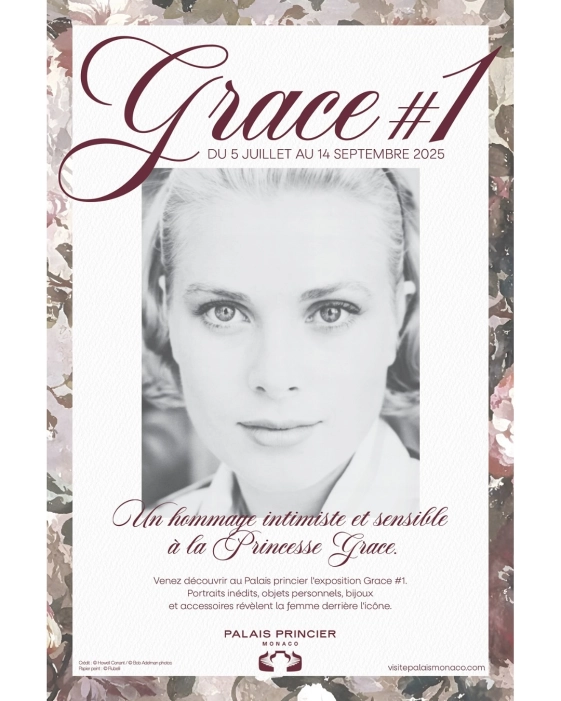
Exposition « Grace » #1
Online content

Commemoration: An Exhibition on the Liberation of Monaco
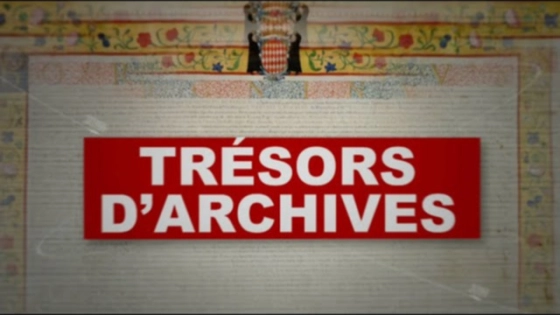
Archive Treasures: the alliance between the Grimaldi family and Charles V
News posts
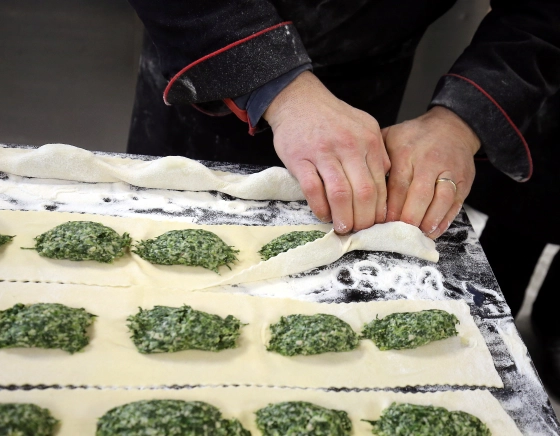
La gastronomie monégasque à l'honneur

Réunion annuelle 2025 du Conseil de Direction de l'APE sur les Itinéraires Culturels du Conseil de l'Europe
